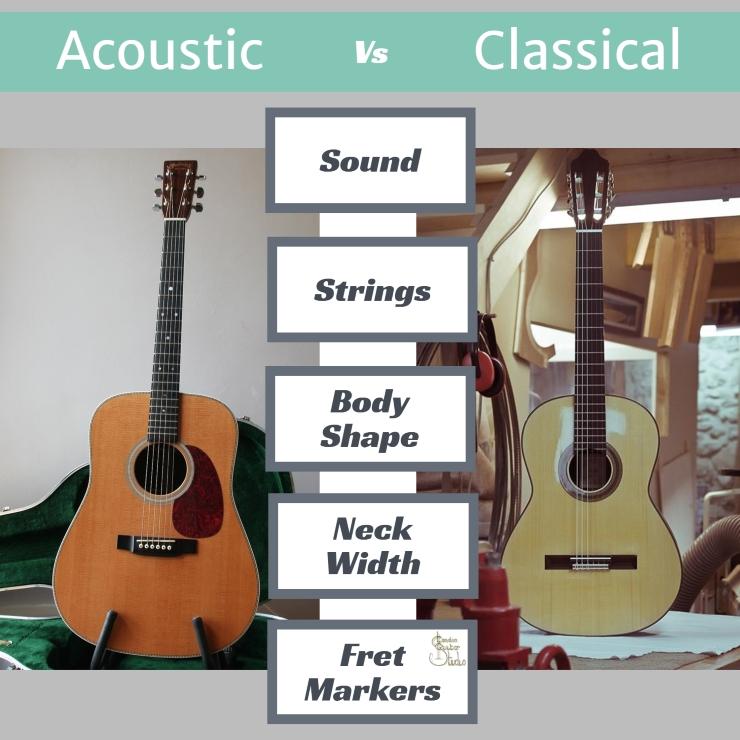A classical guitar produces a warm, mellow, and soft sound. Its nylon strings offer a richness and depth of tone that steel strings lack.
In the meantime, don't forget to unlock a world of unlimited sound with Amazon Music Unlimited, where over 100 million songs wait at your fingertips. Whether you're working, relaxing, or fueling your creativity, the right track is always just one tap away. Elevate every moment with music that moves you.
The classical guitar is a plucked string instrument famed for its dynamic range and intimate tone, which makes it perfect for pieces that require nuance and subtlety. Distinguished by its use of nylon strings, as opposed to the steel strings of acoustic and electric guitars, the classical guitar delivers a distinct timbre that has become the cornerstone of traditional and contemporary classical music.
Its sound is often associated with romantic and baroque melodies, and due to its gentler and more melodic voice, it resonates well in solo performances or as part of an ensemble. The inherent qualities of the classical guitar make it an enduring favorite among purists and enthusiasts of the genre, captivating audiences with its soothing and elegant sound.

Credit: richterguitar.com
Understanding The Classical Guitar
The melodious notes of a classical guitar captivate the listener with a warm, rich, and resonant sound that is immediately identifiable. To fully appreciate the nuances of this beloved instrument, it’s essential to delve into the aspects that shape its distinct sonic characteristics. This exploration starts with a fundamental understanding of the classical guitar’s unique design, the choice of materials for its strings, and the notable differences distinguishing it from its acoustic counterpart.
The Anatomy Of A Classical Guitar
A classical guitar is akin to an artist’s canvas, where every component contributes to the instrument’s overall tonal palette. Crafted with precision, the guitar features a hollow body with a sound hole, a neck with a fretted fingerboard, and tuning pegs that maintain string tension. The wood used for construction, typically cedar or spruce for the top and mahogany or rosewood for the back and sides, greatly influences the sound, offering a mellow yet clear tone. The body’s size and shape enhance the guitar’s ability to resonate, culminating in its signature sonic warmth.
- Top (Soundboard)
- Back and Sides
- Neck
- Fingerboard
- Bridge
- Sound Hole
- Tuning Pegs
The Strings’ Material And Tension
Classical guitar strings play a pivotal role in influencing tonal quality. Made from nylon rather than the steel strings found on acoustic guitars, these strings give the classical guitar its soft, lush sound. Nylon strings exert less tension compared to steel strings, resulting in a gentle feel and ease of playability. Historically, the strings were fashioned from gut, which some purists still prefer for its authentic timbre.
| String Type | Tension | Sound Quality |
|---|---|---|
| Nylon | Low | Soft, Warm |
| Gut | Varies | Rich, Authentic |
| Steel (Acoustic) | High | Bright, Loud |
Differences Between Classical And Acoustic Guitars
While classical and acoustic guitars may appear similar at a glance, a closer look reveals several key differences. The classical guitar’s wider neck allows for intricate fingering techniques essential to classical music, while the acoustic guitar’s narrower neck is designed for versatility across various musical styles. The classical guitar uses nylon strings, resulting in a more mellow sound, in contrast to the brighter and louder sound produced by an acoustic guitar’s steel strings. Additionally, classical guitars typically lack the truss rod that reinforces an acoustic guitar’s neck, a design choice that reflects the different tensions exerted by their respective string types.
- Neck Width: Classical guitars have a wider neck compared to acoustic guitars.
- String Material: Nylon strings on classical guitars vs. steel strings on acoustic guitars.
- Sound Profile: Classical guitars provide a softer sound, while acoustic guitars are brighter and louder.
- Truss Rod: Classical guitars usually do not have a truss rod, unlike acoustic guitars.

Credit: m.youtube.com
Characteristics Of Classical Guitar Sound
The characteristics of classical guitar sound paint a vibrant soundscape uniquely distinct from other guitar types. Renowned for its intimate and delicate tones, the classical guitar emanates a sonorous quality that is both enchanting and deeply evocative. It engages the listener with subtleties and nuances that can express a range of emotions, from melancholy to exuberance. Below, delve into the sonic attributes that make classical guitars a favorite among aficionados and concert performers alike.
Tonal Quality And Warmth
The tonal quality of a classical guitar radiates with richness and warmth. This is accomplished through the combination of nylon strings and the guitar’s construction, frequently using woods like cedar or spruce for the top which greatly influence the sound. The nylon strings, in comparison to steel strings, produce softer, mellower tones, making them ideal for intricate fingerpicking styles.
Influence Of Body Size And Shape On Sound
Classical guitars feature a wide range of body sizes and shapes, each contributing to the instrument’s distinct sound. A larger body size generally offers deeper, more resonant bass frequencies, while a smaller body emphasizes clarity and brightness. Similarly, the shape can affect the projection and volume, with traditional Spanish designs known for their balanced and focused output. The choice in size and shape is largely a matter of personal preference and performing context.
Dynamic Range And Expression
One of the most captivating features of classical guitar is its vast dynamic range and capacity for expression. Gifted players exploit this, coaxing out emotive passages through control over volume and articulation. The instrument can whisper in pianissimo or soar in fortissimo, enabling performers to convey subtle shades of mood and intention. This dynamic flexibility is fundamental in classical guitar compositions and arrangements, distinguishing it from other guitar styles.
The Role Of Nail Technique In Sound Production
- Fingernail length and shape greatly influence the timbre and attack of each note.
- Using nails can add brightness and clarity to the sound, while flesh-only playing yields a softer, more muted tone.
- Advanced players use a mixture of both to achieve desired textures and tonal variations.
- Variations in nail technique, such as angle and point of contact, are vital for crafting personalized sounds.
Genres And Contexts For Classical Guitar Music
The classical guitar sings with a voice that whispers of ancient tales and dances through the diverse tapestries of musical genres. Its sound, rich and emotive, is a chameleon that gracefully navigates disparate contexts—framing the soul of a composition with delicate nuances. From the drawing rooms of European aristocracy to the festive streets of South America, classical guitar music is both timeless and borderless, always ready to adapt and enchant.
Historical And Cultural Significance Of Classical Guitar
The classical guitar holds a noteworthy place in the history of music. Its origins trace back to the lute of the Renaissance and the Baroque guitar, with its distinctive polyphonic style—a treasured sound that still echoes in modern performances. Across centuries, it grew as the backbone of intimate gatherings and courtly entertainments, culminating in a robust, globally recognized tradition that spans classical compositions, folk music, and beyond.
- European Masters: The guitar centrally featured in the works of Spanish composers like Francisco Tárrega and Fernando Sor, embodying the soul of Romantic-era compositions.
- Latin Contributions: Latin America gave the instrument a distinguished voice, with artists such as Agustín Barrios and Heitor Villa-Lobos crafting melodies infused with cultural identity.
Genre-specific Sounds In Classical Guitar Repertoire
The repertoire of the classical guitar spans across various genres, each presenting a unique aural landscape. From the Baroque elegance to the flamenco fire, this instrument adapts to convey the diverse emotions and technical intricacies that genres demand.
| Genre | Characteristics |
|---|---|
| Baroque | Counterpoint, ornamentation, and complex harmonies. |
| Romantic | Expressive dynamics, lyrical melodies, and rich tonal color. |
| Flamenco | Rhythmic intensity, percussive techniques, and passionate flair. |
| Modern | Expansive tonality, innovative techniques, and genre-blending elements. |
Contemporary Usage And Fusion Styles
The threads of classical guitar are woven into the fabric of contemporary music in fascinating ways. The instrument’s versatility finds it melding with diverse genres—jazz, pop, rock, and even electronic music—to create eclectic fusion styles. It stands in the spotlight on world stages and whispers in the background of movie soundtracks, proving its enduring relevance and adaptability.
- Crossover Projects: Classical guitarists like Miloš Karadaglić collaborate with artists across genres, bridging classical traditions with modern sounds.
- Soundtracks: Composers incorporate the classical guitar to add depth and character to film scores, evoking mood and setting with its expressive capabilities.
- Experimental Works: Innovation in guitar composition continues, with performers like Kaki King exploring the boundaries of what the classical guitar can achieve.

Credit: www.londonguitarstudio.com
Can Strumming a Classical Guitar Affect Its Sound Quality?
Strumming a classical guitar can significantly impact its sound quality. The technique, pressure, and speed of strumming influence the resonance and clarity of the notes produced. Proper strumming allows the guitar to project a full, rich tone, enhancing both dynamics and expression in performance. Experimentation is key to achieving the best sound.
Frequently Asked Questions For What Does A Classical Guitar Sound Like
How Would You Describe The Sound Of A Classical Guitar?
The classical guitar produces a warm, mellow sound with rich tonal nuances and a broad dynamic range. Its nylon strings deliver a clear, precise tone ideal for intricate melodies and chord progressions.
What Is The Sound Quality Of A Classical Guitar?
The sound quality of a classical guitar is typically warm, clear, and resonant with rich basses and vibrant trebles, ideal for the nuanced tones of classical music.
Can A Classical Guitar Sound Like An Acoustic Guitar?
A classical guitar can somewhat mimic an acoustic guitar’s sound by using steel strings, though it won’t match it exactly due to differences in body and construction.
Can You Play A Classical Guitar Like An Acoustic?
Yes, you can play a classical guitar like an acoustic, but the nylon strings produce a softer tone compared to acoustic steel strings. Classical guitars are typically played using fingerstyle rather than with a pick.
Conclusion
Embracing the classical guitar’s sound, we journey through subtle nuance and rich tonality. This instrument’s voice is both intimate and expressive, offering a vivid tableau of musical shades. With each pluck of the strings, you experience a distinctive auditory embrace, one that echoes tradition and stirs the soul.
Let the classical guitar enchant you with its timeless melody.
{ “@context”: “https://schema.org”, “@type”: “FAQPage”, “mainEntity”: [ { “@type”: “Question”, “name”: “How would you describe the sound of a classical guitar?”, “acceptedAnswer”: { “@type”: “Answer”, “text”: “The classical guitar produces a warm, mellow sound with rich tonal nuances and a broad dynamic range. Its nylon strings deliver a clear, precise tone ideal for intricate melodies and chord progressions.” } } , { “@type”: “Question”, “name”: “What is the sound quality of a classical guitar?”, “acceptedAnswer”: { “@type”: “Answer”, “text”: “The sound quality of a classical guitar is typically warm, clear, and resonant with rich basses and vibrant trebles, ideal for the nuanced tones of classical music.” } } , { “@type”: “Question”, “name”: “Can a classical guitar sound like an acoustic guitar?”, “acceptedAnswer”: { “@type”: “Answer”, “text”: “A classical guitar can somewhat mimic an acoustic guitar’s sound by using steel strings, though it won’t match it exactly due to differences in body and construction.” } } , { “@type”: “Question”, “name”: “Can you play a classical guitar like an acoustic?”, “acceptedAnswer”: { “@type”: “Answer”, “text”: “Yes, you can play a classical guitar like an acoustic, but the nylon strings produce a softer tone compared to acoustic steel strings. Classical guitars are typically played using fingerstyle rather than with a pick.” } } ] }
As an Amazon Associate, Cleanestor earns from qualifying purchases at no additional cost to you.

